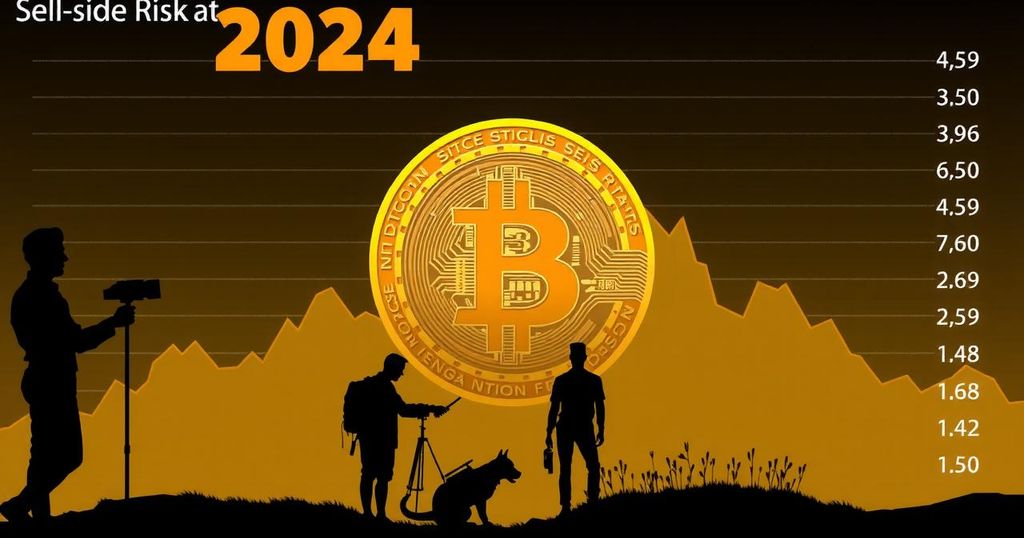Bitcoin Sell-Side Risk Reaches Low as Market Dynamics Shift
Bitcoin’s sell-side risk has hit its lowest point in 2024, indicating a decreased willingness among holders to sell their assets. This trend suggests resilience within the market despite recent volatility. The network activity illustrates considerable daily profits, debunking notions of stagnation. Overall, short-term holders are achieving profitability, marking a critical phase in market dynamics.
Recent data from the on-chain analytics platform, CryptoQuant, indicates that Bitcoin’s sell-side risk has reached a record low for 2024, remaining just $10,000 away from the cryptocurrency’s previous price peak. Despite moments of sharp sell-offs amid price fluctuations in recent months, there is a prevailing sentiment among holders against capitulating their assets. According to Axel Adler Jr., a contributor at CryptoQuant, the sell-side risk ratio—which evaluates potential selling pressures by summing daily on-chain realized profits and losses and comparing this with Bitcoin’s realized cap—has notably diminished, with values currently below 20,000. In contrast, during the height of Bitcoin’s market in March, this metric was nearly at 80,000. This suggests that the willingness to sell Bitcoin has significantly decreased over the past six months since the price peak of $73,000. Accompanying this analysis, Adler noted that Bitcoin’s network activity, measured in USD, remains robust, achieving a daily net tally of approximately $500 million in realized profits against $115 million in losses, indicating a net average profit of about $456 million per day. Furthermore, the aggregate cost basis of various cohorts of Bitcoin investors is crucial in establishing support and resistance levels for BTC. Current data reveal that short-term holders (STHs) are reverting to profitability, having endured a prolonged period characterized by market volatility, and adjusting their holdings frequently. Overall, as Bitcoin transactions have witnessed a significant decline of 30% over the past six months amidst widening speculation of price stagnation, Adler cautioned against misconceptions regarding the network’s vitality, asserting that it remains operationally sound. The STH cost basis is calculated to be around $62,250, and recent assessments suggest that the market stands at a critical juncture.
The topic of Bitcoin sell-side risk pertains to the dynamics of market participants’ willingness to sell their holdings, which directly impacts price movements and market sentiment. The sell-side risk ratio serves as a critical indicator, reflecting the broader investor behavior and triggering points of price volatility. Specifically, understanding the phases of heightened or weakened sell-side risk can assist investors and analysts in forecasting potential market fluctuations and provide insights into whether there is an appetite for selling at different price levels. The examination of Bitcoin network activity, including realized profits and losses, further informs the current market health and investor sentiment. As Bitcoin continues to garner attention, understanding these underlying factors is essential for prognosis in the cryptocurrency space.
In conclusion, the current state of Bitcoin’s sell-side risk indicates a reduction in the number of sellers willing to capitulate their holdings, suggesting a resilient sentiment among long-term holders despite market fluctuations. As the sell-side risk ratio falls to its lowest levels since 2024, it serves as a potential precursor to future price stability or growth. Moreover, the consistent net profit realized daily emphasizes the ongoing activity within the Bitcoin network, countering narratives of market stagnation. Consequently, market participants should remain attentive to these metrics as they navigate the complexities of investing in Bitcoin.
Original Source: cointelegraph.com








Post Comment